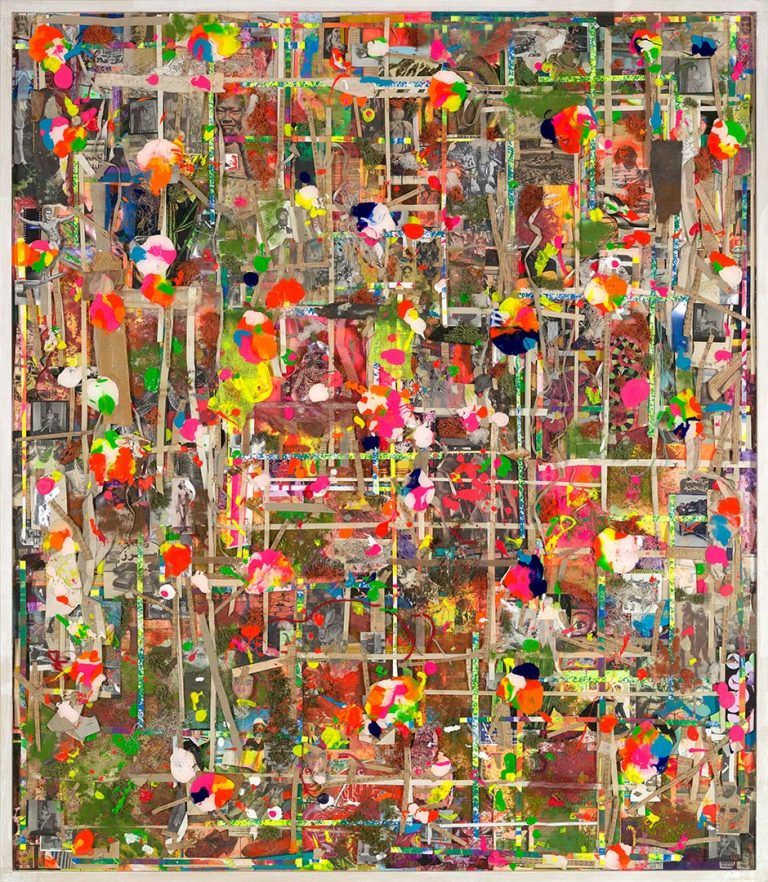We acknowledge the Traditional Owners of the land on which the Queensland Art Gallery | Gallery of Modern Art stands and recognise the creative contribution First Australians make to the art and culture of this country.

Shinro Ohtake / Japan b.1955 / Oku-Kei 13 2017 / Oil, acrylic, ink, coloured ink, colour powder, printed matter, photograph, ink-jet print, silk screen print, hemp cloth, cotton cloth, synthetic leather, cheesecloth, silk thread, cotton yarn, adhesive cellophane tape, packing tape, metal, lead, sponge, lichen, plastic, plastic sheet, balsa wood, packing paper, thin paper, Japanese paper, newspaper, wall paper and paper in custom frame / 153 x 133 x 9.2cm / Purchased 2018. Queensland Art Gallery | Gallery of Modern Art Foundation / Collection: Queensland Art Gallery | Gallery of Modern Art / © Shinro Ohtake
Shinro OhtakeOku-Kei 13 2017
Not Currently on Display
For all the apparent intensity of the cut-and-pasted surfaces of Shinro Ohtake’s works, they are created with great patience. The artist methodically creates layers of material inspired by geological strata, striving for a ‘variation of density’ rather than a thematic connection between elements.
The works in Ohtake’s series ‘Oku-Kei’ (‘memory-scapes’) are distinguished by a pronounced use of colour and figuration. Created from cut-out photographs and other found materials, they are overlaid with sheets of clear acrylic that are painted with bursts of iridescent colour to create an intense visual field.
Luminous blooms hover above scraps of paper, fabric and tape assembled in layers that reveal old film stills, erotic photographs and commercial drawings. These images, which Ohtake has sourced from product catalogues, media reportage and illustrated textbooks, are of interest to the artist for their ‘diluted’ expressive intent rather than their content. He favours them as emotionless attempts to communicate reality and opens up the narrow range of possible readings by creating new combinations.
Shinro Ohtake was born in Tokyo in 1955, and lived in London in the late 1970s at the height of the punk scene. After studying oil painting at Musashino University he formed the pioneering noise outfit Juke/19 and embarked on a series of exhibitions that helped catalyse the contemporary art scene then emerging in the Japanese capital.
Driven by a sense of curiosity, his methods include cutting and pasting images, testing the viscosity and hue of oil paint, and recycling discarded objects. For all the feverish intensity of Ohtake’s surfaces, they are created with great patience, and have evolved slowly according to his material preoccupations. Rather than working with a thematic connection between cut and pasted elements, Ohtake’s process of selection, as displayed in this work, is impulsive and intuitive.